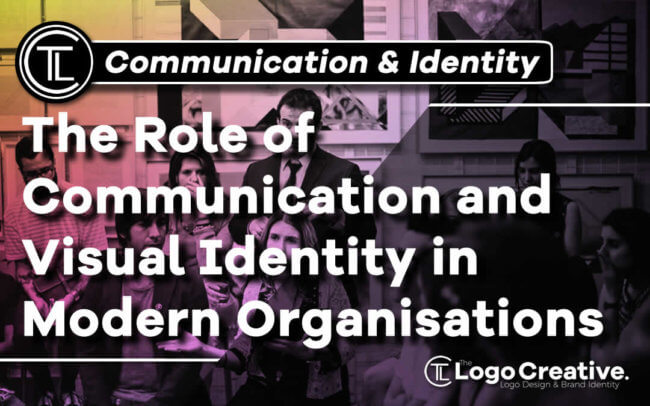What qualities make an organization one-of-a-kind? Are those employees, products, design, slogan, or mission? The correct answer is — all of them! Corporate or visual identity is the umbrella term for all of these qualities. In this article The Role of Communication and Visual Identity in Modern Organisations.
Only a few decades ago, the term mostly implied a visual representation of the company, such as its design or a logo. Today, it has become so much more than that.
Now it includes every business aspect and activity apart from the visuals. With the help of marketers, identity is created and shared through communication.
Organizational values and culture are constantly being shared with employees, customers, investors, and vendors.
Therefore, communication and visual identity go hand in hand.
Take a look at some of their other roles in modern organizations.
Table of Contents
Engaging Employees

Visual identity and communication also serve to connect employees and the organization. To produce their best work, employees have to feel not only like a part of the team but also of something much greater.
They might be aware of the company’s mission, but when they start feeling out of place, you can always remind them what the organization stands for.
Every email or message sent through the intranet should keep employees reminded of the company’s set of values.
They have to identify with it if the company wants to retain and hire top talent.
Otherwise, the company might face high turnover rates. Whenever you communicate with employees, in verbal or written form, make sure you include even the smallest detail helping them to identify with the company and their department.
Raising Brand Awareness
Modern organizations have to be present online and noticed if they want to be successful. If the audience doesn’t know about your brand’s existence, then how can they buy your products or use your services?
For this reason, most marketing strategies focus on raising brand awareness. The best place to increase your brand’s visibility is through the Internet and social media.
These are the places to be if you want to be seen. However, this doesn’t mean you can just create a website or a profile and forget about it.
On the contrary, your marketing team should regularly post engaging content that also promotes the brand’s identity.
More importantly, through interaction with existing customers, you can share your brand’s beliefs and expand your customer base.
Customers like to connect with brands that share the same values as they do.
Building Reputation

Entrepreneurs always search for ways to get leverage over their competitors. The greatest leverage they can have, for that matter, is reputation.
An enviable reputation can take your business a long way. Solely on its basis, you can grow your business and customer base.
Customers always put their trust in approved, high quality, and trustworthy brands.
For this reason, you have to be careful with your actions.
You know what they say, actions speak louder than words. Your brand’s belief system should be your guide whenever you want to take some action.
If you stand for diversity, equality, innovation, and quality, then your workforce and products should clearly reflect it. What you do and what others think of you builds your reputation.
Whatever your reputation is, it is a part of your brand identity. Therefore, make sure to always meet or even exceed the expectations of your environment.
Creating Company Culture
It doesn’t matter what your brand’s values are, as long as they match with your company’s culture. When the two of them align, your company and brand are going in the right direction.
Staying ahead of the curve, attracting customers, avoiding failures, and building a company with integrity will be much easier. When you and your team uniquely operate internally, your identity and reputation become unique as well.
For this reason, your employees have to embrace your company’s uniqueness on all its levels and reinforce it in their day-to-day work activities and communication with clients.
That is why you have to create a positive company culture. On the other hand, if the culture and identity mismatch, you will have satisfied employees but no desired results.
Setting an Example

Managers play a key role in building a strong visual identity. Because managers are the leaders, they have to set an example for other employees to follow.
As a manager, you have to be aware at all times how big of an effect your actions have on your work environment. To put it simply, your employees will behave the same way as you do.
You can turn this to your advantage. If you want them to promote your company’s values and convey its identity, you have to do it yourself first.
When they see how you assume this identity as a part of the organization, they will do the same.
Join The Logo Community
We hope you have enjoyed The Role of Communication and Visual Identity in Modern Organisations. If you would like more personal tips, advice, insights, and access to our community threads and other goodies join me in our community.
You can comment directly on the posts and have a discussion with Andrew, the Founder of The Logo Creative.
*TIP – We recommend Skillshare to learn online. There are tons of classes for everything including graphic design, web design, marketing, branding and business related courses. Get a free 2 months with our link and you won’t regret it Trust us!
 Author Bio
Author Bio
Sarah Jessica Smith is a young blogger from Sydney. She is in love with life and all the things that can make her daily routine easier. She loves to write about business, marketing, productivity and workspace décor.


